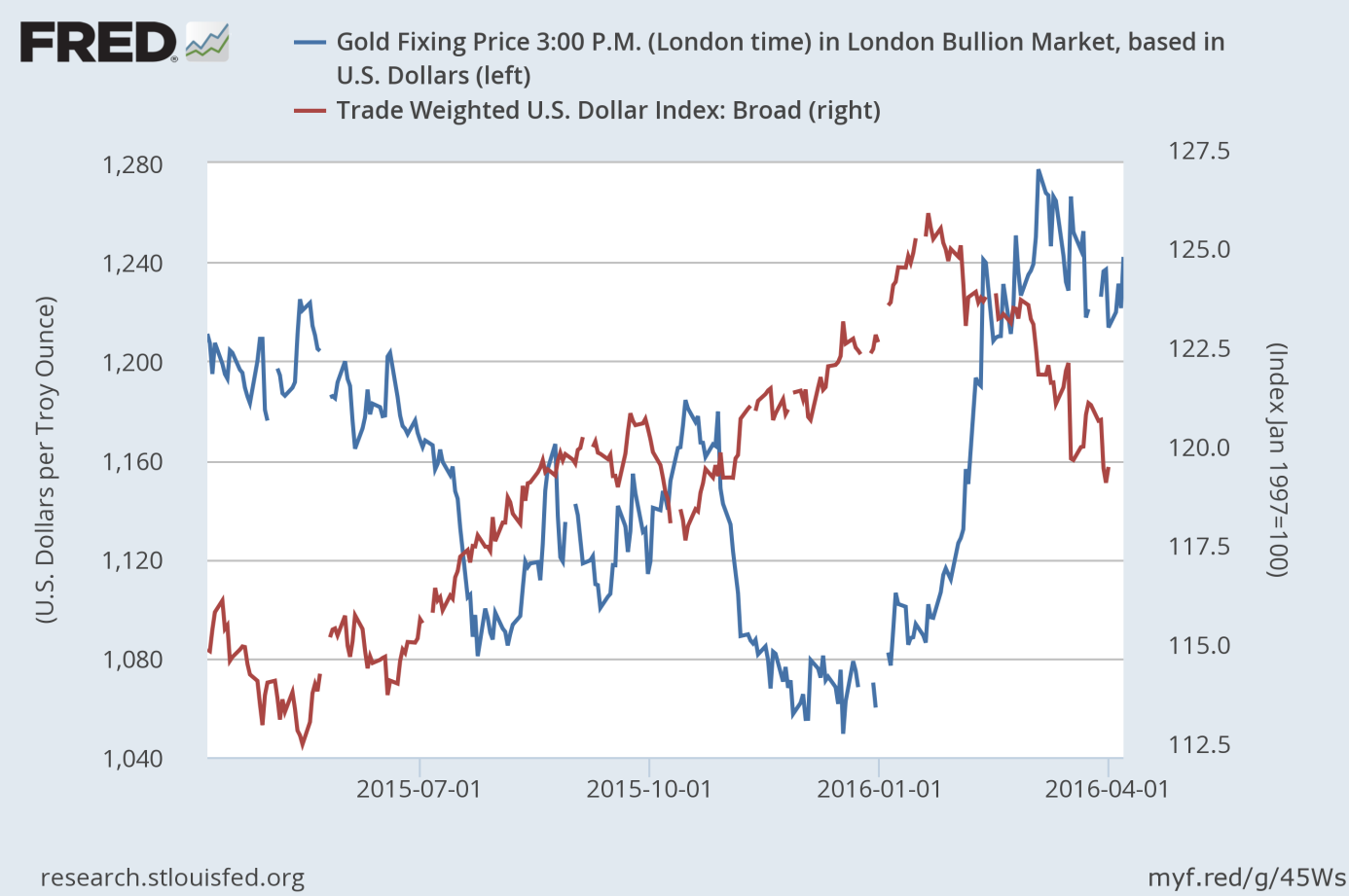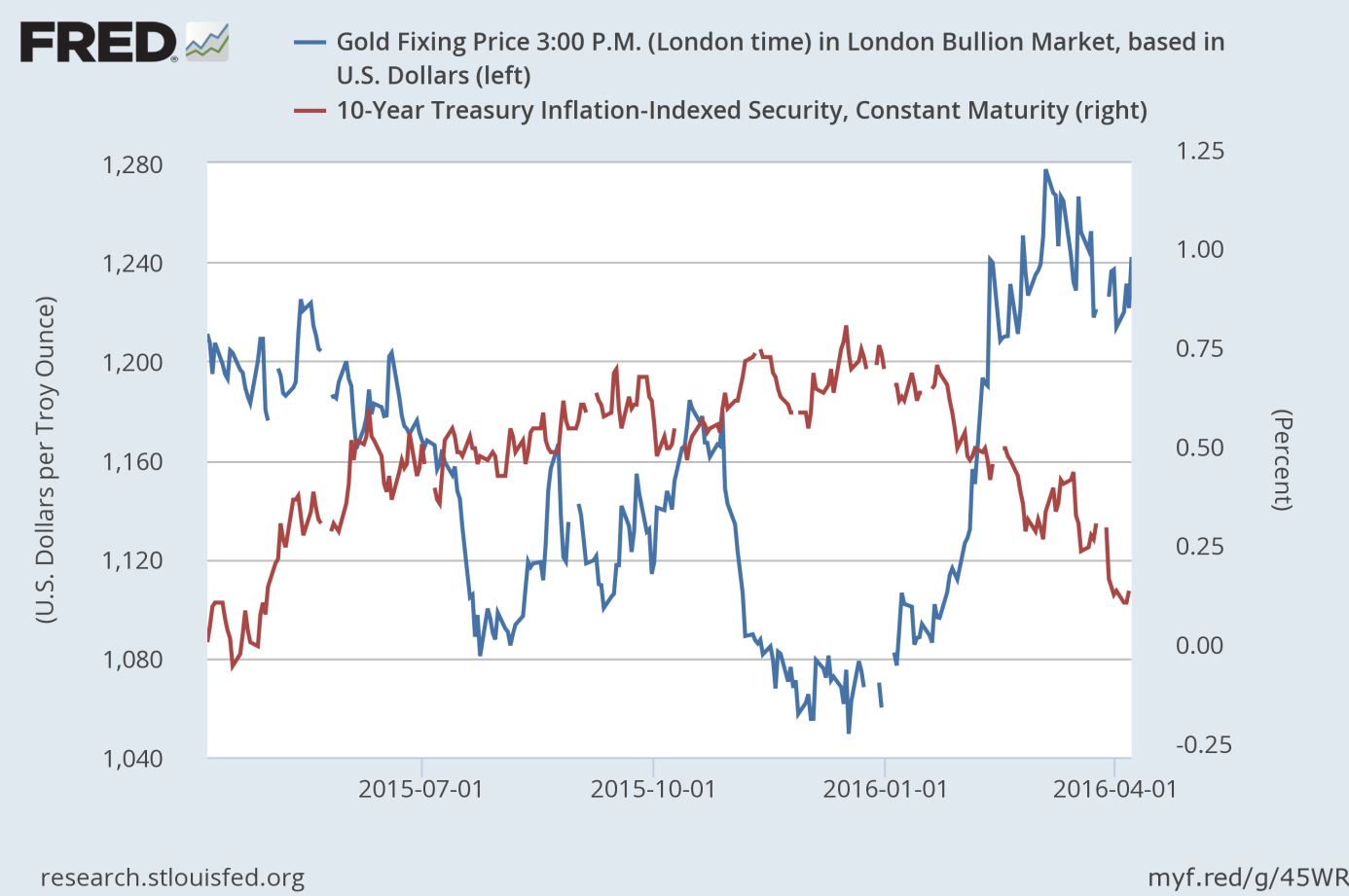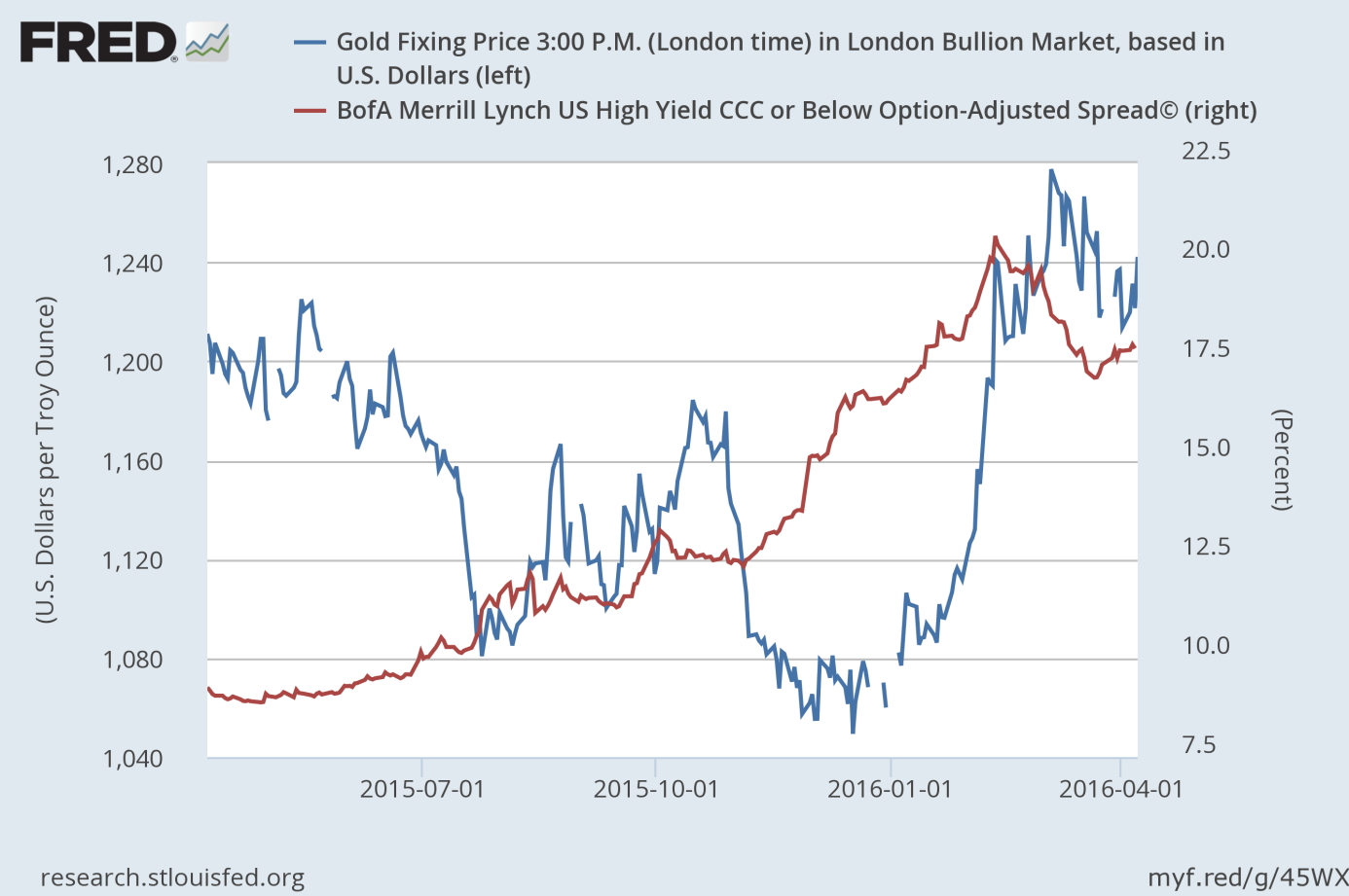Yesterday, the WGC released its latest market update entitled “Gold outshines the market in Q1 2016”. What are the main conclusions of the report?
Glittering Start to 2016
The price of gold rose 16.7 percent in U.S. dollars in Q1 2016, being one of the best performing global assets during that time. Actually, it was gold’s best performance in almost three decades. Importantly, the price of gold also increased in major trading currencies, rising by 11 percent, 20 percent and 9 percent in the euro, British pound and Japanese yen terms, respectively.
According to the WGC, the rally was caused by ongoing concerns about economic growth and financial stability in emerging markets, a hiatus in the rise of the U.S. dollar, the implementation of negative interest rate policies by leading global central banks, the return of pent up investment demand for gold, and price momentum (i.e. investors following gold’s upward trend). Indeed, the investment demand for gold was strong, as gold-backed ETFs had the second strongest quarter on record (inflows rose by 363 tons), while net long positions on Comex had their largest quarterly average increase since Q4 2009. The WGC’s explanation seems to be correct, though it mentions neither the reduction in faith in central banks, nor the softened expectations of the Fed’s interest rate hikes as bullish factors for gold in Q1 2016.
Let’s check in detail the fundamental factors behind the gold’s rally in the first quarter of the year. As one can see in the chart below, the price of gold was negatively correlated with the greenback, but initially gold rose in tandem with the U.S. dollar. Also, the jump in gold prices in February seems to be disproportionate to the greenback’s move.
Chart 1: The price of gold (blue line, left axis, London P.M. fix) and the broad trade-weighted U.S. dollar index (red line, right axis) over the last twelve months.

The second chart suggests that the decline in real interest rates (due to the softer pace of the Fed’s tightening) contributed significantly to the gold’s rally.
Chart 2: The price of gold (blue line, left axis, London P.M. fix) and real interest rates (red line, right axis, 10-year inflation-indexed Treasuries) over the last twelve months.

New Bull Market in Gold?
Historical analysis of previous bull-bear market cycles conducted by the WGC suggests that gold could enter a bull market. The reasoning goes as follows: the recent bear market lasted 52 months (from September 2011 to December 2015) and the price of gold declined 44.1 percent. That pullback is in line with the median length (52 months) and magnitude (-42.7 percent of cumulative return) of the previous bear markets. It goes without saying that the length and magnitude of previous bear cycles do not determine the properties of next cycles. The WGC seems to be aware of the limitations of their analysis, because it adds that a sustained rally would be supported by two consecutive quarters of strong returns. The report believes that the inflows into gold will remain robust in the second quarter, as the current macroeconomic environment remains supportive for both investment and central bank demand.
Conclusions
Summing up, the WGC released its new market update yesterday. The report noted and explained gold’s excellent performance in Q1 2016. Based on the historical analysis of previous bear market cycles, the WGC suggested that the yellow metal had entered a new bull market. We agree that the long-term outlook for the precious metals sector is positive, but also believe much lower prices could be seen in the following months. Indeed, as we wrote on Tuesday and Wednesday, the world’s leading precious metals consultancies predict a correction in gold prices in the nearest months (as some of the recent buying has been tactical rather than strategic in nature). The last chart suggests that one of the biggest threats to gold is the easing of global uncertainty. The price of gold was rising in January and February when the credit spreads were also increasing, but we saw a drop in the price of gold when the spreads narrowed in March.
Chart 3: The price of gold (blue line, left axis, London P.M. fix) and the spread between corporate bonds rated CCC and below and Treasuries (red line, right axis) over the last twelve months.

Disclaimer: Please note that the aim of the above analysis is to discuss the likely long-term impact of the featured phenomenon on the price of gold and this analysis does not indicate (nor does it aim to do so) whether gold is likely to move higher or lower in the short- or medium term. In order to determine the latter, many additional factors need to be considered (i.e. sentiment, chart patterns, cycles, indicators, ratios, self-similar patterns and more) and we are taking them into account (and discussing the short- and medium-term outlook) in our trading alerts.
Thank you.
Arkadiusz Sieron
Sunshine Profits‘ Gold News Monitor and Market Overview Editor
Gold News Monitor
Gold Trading Alerts
Gold Market Overview



